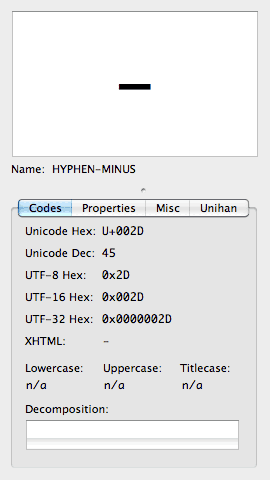Ciao, Camino
Published 10 years, 10 months pastIt’s been obvious for a long time that Camino was withering away, but they’ve formally called an end to the project:
After a decade-long run, Camino is no longer being developed, and we encourage all users to upgrade to a more modern browser. Camino is increasingly lagging behind the fast pace of changes on the web, and more importantly it is not receiving security updates, making it increasingly unsafe to use.
I used Camino for a long time, and only left when it had lagged much too far behind the rest of the browser market. (Camino used Gecko embedding, which was disabled a couple of years ago. That change effectively froze Camino’s rendering engine at the level of Firefox 3.6.)
When I migrated away from Camino, I tried a few alternatives and eventually settled on Firefox because its UI was the least unlike Camino’s. (We like best what we know best.) There were still some things I sorely missed, though, like simple Flash blocking and whitelisting, the multi-row Bookmarks bar, the keyboard bookmark-activation shortcuts, and the truly great downloads manager. If you miss those (or would like to experience them) too, here’s how I got them back in Firefox:
- Flashblock — though its UI isn’t quite as easy as Camino’s Flash preferences, Flashblock works well and allows whitelisting.
- Multirow Bookmarks Toolbar Plus — the layout of this has gotten a bit wonky under recent Firefox Nightly builds, but still works just fine, and you can even set it to auto-hide itself.
- Bookmark Shortcut Keys — built for me in Jetpack by Jeff Balogh, this lets you define which keyboard shortcuts trigger the first nine bookmarks in the Bookmarks bar. I use this all the time, just as I did in Camino. I’ve defined my shortcuts to be ⌘1 through ⌘9, but you can pick whichever modifier keys you like. Thanks, Jeff!
- Download Manage Tweak — adds controls to show a file in the OS, delete the file, remove the file from the list without deleting it, and so on. As with Flashblock, it isn’t quite as smooth as Camino’s UI, but it does the same job and a bit more besides.
And one more: New Tab Homepage, which makes certain that Firefox loads your Home page, and not the dashboard, whenever you open a new tab.
Oh, all right, one more one more: RSS Icon in Awesombar. If you still roll that way.
So if you still pine a bit for Camino’s UI features, there’s how you can recreate most of the experience in Firefox. If you don’t, then peace be with you, as with the entire Camino team. Thank you all for everything you did to bring OS X a great browser that just felt right.
